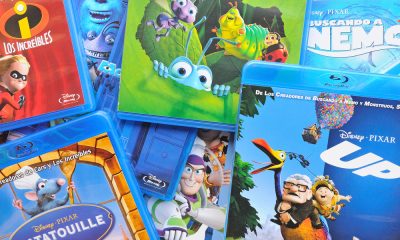19 Scientific Advances of 2020 That Will Shape the Future
Science has always wowed humans with the knowledge we glean from the past and the advances we make for the future.
When I was a kid watching the Jetson’s, I believed we would have flying cars and AI that cleaned my house for me…
2020 didn’t look like that.
However, there were many discoveries involving space, healthcare, climate, and ancient mysteries.
Below are some of the scientific advances of 2020 that are likely to guide us forward to the future.
SpaceX launches two astronauts into space for the first time
Elon Musk’s SpaceX launched its first crewed mission on May 30th, 2020.
Falcon 9 rocket and Crew Dragon spacecraft took off from NASA’s Kennedy Space Center in Florida at 3:22 p.m. ET.
NASA astronauts Bob Behnken and Doug Hurley were the first NASA astronauts to go back into space since NASA ended the program over a decade ago.
SpaceX launched 60 Starlink internet satellites
Space X completed its 19th launch last year on October 24, 2020.
The Falcon 9 rocket left from the Cape Canaveral Air Force Station.
It successfully launched 60 more Starlink internet satellites in an attempt to achieve global high-speed internet services.
NASA and the European Space Agency gathered incredible footage of the sun
Solar Orbiter was launched on Feb. 9, 2020 (EST).
The spacecraft completed its first close pass of the Sun in mid-June.
The pictures it captured will help scientists study the atmospheric layers of Earth’s closest star.
This will aid in understanding the weather and so much more about the Sun.
Tennessee baby born from an embryo frozen over 27 years ago
Tina and Ben Gibson welcomed Molly Everette Gibson to the world on Oct. 26, 2020.
She weighed 6 pounds, 13 ounces.
What is notable about her birth is the fact that her embryo was first created and frozen in October 1992.
lt was thawed on Feb.
10, 2020, and her birth set a new known record for the longest-frozen embryo to be born.
The previous record was set by Molly’s sister, Emma Wren Gibson, whose embryo stayed frozen (at the same time as Molly’s) 24 years until she was born in 2017.
COVID-19 Vaccine development
The world watched and waited anxiously for a COVID-19 vaccine to be developed.
Before the end of the year, the Pfizer and Moderna vaccines started getting into the arms of Americans.
The vaccines used new technology involving the synthetic strand of genetic code called messenger RNA.
The vaccine gave hope to people in the healthcare industry and those in the high-risk groups.
Researchers Rapidly learned about COVID-19
When this novel Coronavirus hit us, science did what science does and created hypotheses.
We started out not knowing much other than what we knew about other viruses.
Scientists set off to answer questions like:
- How long does the virus stay on surfaces?
- What damage does it do to other body systems?
There was so much to learn but scientists and researchers plugged away; providing us with a wealth of information.
We are still learning, but their knowledge helped keep us all a little safer.
We learned more about dinosaurs
Dinosaurs are old news.
Literally, they roamed the earth for 65 million years before we did, but few things captivate our attention like a T-Rex.
Here we are in 2021 still learning new things about them.
Last year we discovered that some dinosaurs’ eggs were softer shelled.
Scientists confirmed that the Spinosaurus had a paddle-like tail, confirming a theory that the carnivore spent time in the water.
Learning more about the dinosaurs gives scientists more information about evolution, what caused them to go extinct, and even gives creative geniuses more information for movies like Jurassic Park!
Archeologists determined the origin of some Stonehenge boulders
What is Stonehenge?
Who built it?
Why did they build it?
When did they build it?
We still don’t know, but what scientists discovered in 2020 is where the stones came from!
They came from an area called the West Woods, about 15 miles from the site.
How much longer will Stonehenge remain a mystery?
Only time will tell.
Egyptologists found over 160 mummies
They found these mummies buried under the desert sand in Saqqara, an ancient city of the dead.
2500 years ago, these Egyptians were carefully preserved, placed into wooden coffins, and buried in 40-foot shafts.
They remained sealed until just a few months ago.
Now, 2020 might not have been the best time to risk a curse from opening a mummy sarcophagus, but archeologists and Egyptologist will gain a lot of useful information about the ancient civilization.
Glacier breakdown is worse than we thought
The glaciers of Antarctica, specifically Denman, are melting at alarming rates.
This one glacier can raise the global sea level by 5 ft.
Climate researchers also shared disturbing visuals of two other glaciers, the Thwaites and Pine Island glaciers.
The two sit side by side on Antarctica’s western peninsula and house enough ice to account for about 4 feet of rise.
Hopefully, we will heed this warning and make some substantial changes in the fight against climate change.
Scientists created a way to break down plastic faster
Scientists created a super-enzyme, derived from a bacterium that naturally developed the ability to break down plastic.
Plastic pollution has contaminated the entire planet, and it is difficult to break down plastic bottles and make new ones from old material.
This means that new plastic is being created from oil each year.
The new enzyme will enable the full recycling of plastic bottles.
This will help in the battle against pollution and climate change.
The oldest material, ancient stardust, was discovered
Scientists from the University of Chicago and Field Museum have discovered stardust that formed 5 to 7 billion years ago thanks to particles from an Australian meteorite.
This piece of matter, older than the Sun, helps us understand more about booms and star formation.
Learning about the history of stars helps us learn more about a star’s life cycle.
We learned more about black holes
In September 2020, the largest black hole collision was detected.
The new black hole that formed is so large, 142 times bigger than the sun, that scientists didn’t know it was possible.
Hopefully, scientists will learn more about how these massive black holes form, and what they mean for the universe.
Saltwater was discovered on Mars and Ceres
Scientists found three hidden lakes on Mars.
The discovery reported on September 28, 2020, was made with the help of radar data from the European Space Agency’s Mars-orbiting spacecraft, called Mars Express.
The lakes encompass about 75,000 square kilometers.
Will this discovery lead us to find more evidence of life on Mars?
It will help us understand the planet’s weather patterns more.
Ceres, a dwarf planet, has water seeping onto its surface, which suggests the presence of an ancient underground ocean.
Water was discovered on the Moon
Mars and Ceres were not the only places where scientists discovered water.
Our very own moon also joined the list.
Scientists found water on a sunlit surface on the moon, which shows that water is not limited to the coldest spots.
Data, collected thanks to SOFIA, shows that water is present in concentrations of 100 to 412 parts per million, which is about a 12-ounce bottle of water.
This helps scientists further the research into life in outer space.
New treatment for PTSD is being considered
As someone who suffers from PTSD because of childhood trauma, this discovery was especially interesting.
Research conducted by the Centre for Addiction and Mental Health (CAMH) published in the Journal of Clinical Investigation points to a groundbreaking discovery about a new potential treatment and prevention for post-traumatic stress disorder (PTSD).
It centers on the discovery of a new protein complex.
“The discovery of the Glucocorticoid Receptor-FKBP51 protein complex provides a new understanding of molecular mechanisms underlying PTSD,” said Dr. Liu.
“We believe this protein complex normally increases after severe stress, but in most cases, levels soon go back to baseline levels.
However, in those who develop PTSD, the protein complex remains persistently elevated, and so this could be a blood-based biomarker for PTSD as well as being a target for pharmacological treatment.
In addition, the peptide we developed could be given after a traumatic event, and could possibly prevent the patient from developing PTSD.
This is a completely new approach to PTSD and for psychiatric disorders in general.”
They grew meat in a lab
Making sure that there is enough food for the human population has been on science’s radar for years.
The problem comes down to texture and taste.
In a new study, researchers created a spongy 3D scaffold out of soy protein.
In this new study, scientists wanted to create something that resembled steak, instead of the current ‘nuggets’ and ‘patty’ options.
They seeded and grew three cell types—smooth muscle, endothelial cells, and satellite cells—a combination that gave the end product a more meat-like texture.
A room-temperature superconductor
Scientists have created a ‘mystery material’ (the material itself is poorly understood).
It appears to conduct electricity with no resistance at temperatures of up to about 15 °C.
That’s a new record for superconductivity, which usually only happens at frigid temperatures.
It won’t have any immediate applications, because it requires the use of intense pressures, but scientists are hopeful it leads to additional options for conducting electricity.
Artificial Intelligence could spot Breast and Prostate Cancer
In January 2020, researchers published findings proving that Google’s DeepMind AI system could successfully read X-Ray scans for abnormalities.
In fact, it outperformed 6 human radiologists.
The AI system showed a 5.7% reduction in false positives.
In another unrelated study conducted in July, researchers at the University of Pittsburgh trained an AI program to determine if prostate cancer cells were present in tissue slides.
Each of these findings affects our understanding of the past and guides us forward to the future.
Maybe we will live in a cleaner, more sustainable world because of some of these advances.
Fighting cancer might become easier in the future.
The journey to space will continue to fascinate us, I am sure.
Maybe, sometime soon, I will have a ‘Rosie’ and a flying car.











